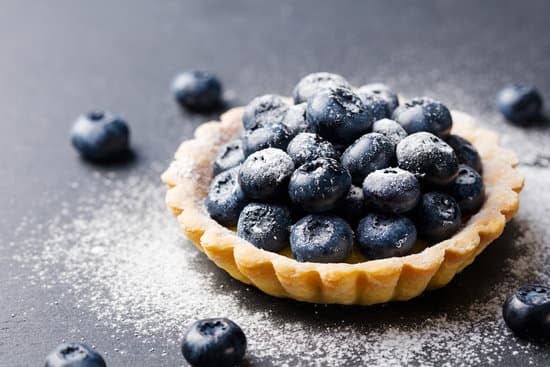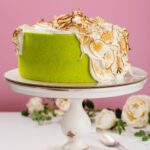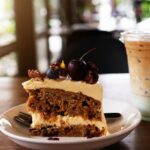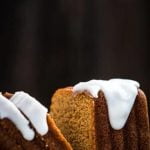The art of cake decoration has taken a new turn with the increasing popularity of using real flowers as adornments. No longer limited to artificial embellishments or fondant creations, real flowers bring a touch of natural elegance to any cake design. With their vibrant colors, delicate petals, and captivating aromas, real flowers have become the go-to choice for those looking to create stunning and unique cake designs.
The use of real flowers in cake decoration has become a growing trend in recent years. Bakers and cake decorators alike are recognizing the added beauty that fresh blooms can bring to their creations. Whether it’s a birthday cake, wedding cake, or any special occasion dessert, the presence of real flowers instantly elevates the aesthetic appeal and creates a captivating centerpiece.
Not only do real flowers add visual appeal, but they also infuse cakes with delightful fragrances. The subtle aroma of fresh blossoms creates an olfactory experience that is sure to impress both visually and gastronomically.
Every bite becomes a multisensory delight as the fragrance of the flowers mingles with the flavors of the cake. From sweet-scented roses to aromatic lavender or vibrant edible pansies, there is a vast array of flower options available to suit every taste and complement various flavors.
In this article, we will explore why real flowers are perfect for cake decoration. We will delve into the best types of flowers commonly used for this purpose and provide tips on selecting appropriate blooms that harmonize well with different cake flavors. Additionally, we will guide you through the process of sourcing high-quality flowers from reputable sources and demonstrate how to safely prepare them for food contact.
So if you are looking to take your cake decorating skills to new heights or simply want to add an extra touch of natural beauty and fragrance to your next confectionery masterpiece, read on as we dive into the world of cake decoration with real flowers.
The Best Types of Real Flowers for Cake Decoration
When it comes to decorating cakes with real flowers, there are certain types of blooms that work best for achieving a stunning and safe cake design. Here are some of the best types of real flowers for cake decoration:
1. Edible Flowers:
Edible flowers are an excellent choice for cake decoration as they not only add beauty but can also be consumed without any harm. Popular edible flowers include pansies, marigolds, violets, roses, and lavender. These flowers not only have vibrant colors but also offer a variety of flavors that can complement different cake flavors.
2. Non-toxic Flowers:
If you prefer using non-edible flowers for your cake decorations, it is essential to choose varieties that are safe for consumption. Flowers such as daisies, sunflowers, asters, tulips (without bulbs), orchids, and carnations can all be used to create aesthetically pleasing designs on cakes. However, always ensure that the flowers have not been treated with pesticides or other chemicals.
3. Organic Flowers:
Opting for organic flowers is another great option when it comes to cake decoration. Using organically grown flowers ensures that no harmful pesticides or chemicals have been used in their cultivation. Roses, peonies, dahlias, snapdragons, and zinnias are popular choices for organic cake decoration.
When choosing real flowers for cake decoration, it’s important to consider the color palette and theme of the cake design as well as the flavor profile of the cake itself.
Tips on Choosing Safe and Harmonious Flower Combinations
- Select flowers that are in season and readily available to ensure freshness.
- Consider matching the color of the flowers to either the frosting or filling of the cake.
- Think about selecting flower varieties that will harmonize with the overall style and theme of the occasion.
- Research potential allergenic reactions before using any specific flower varieties.
- When in doubt, consult a florist or cake decorator who has experience working with real flowers.
By carefully selecting the best types of real flowers for cake decoration and considering both aesthetic appeal and safety, you can create eye-catching and delectable masterpieces that will impress your guests.
Tips for Selecting and Preparing Real Flowers for Cake Decoration
Real flowers can add a touch of natural beauty and elegance to cake decoration. However, it is important to choose the right types of flowers and ensure they are safe for consumption. In this section, we will provide you with tips on selecting and preparing real flowers for cake decoration.
Selecting fresh, high-quality flowers
When choosing real flowers for cake decoration, it is essential to select fresh flowers from a reputable source. Here are some tips to keep in mind:
- Opt for organic or edible flowers: Look for flowers that are specifically designated as edible or have been organically grown without the use of pesticides or other harmful chemicals.
- Choose robust flowers: Select flowers that can withstand sitting out on a cake without wilting or losing their vibrant color. Flowers like roses, pansies, violets, and daisies are known for their durability.
- Consider the season: Use seasonal flowers as they will be fresher and more readily available. Additionally, seasonal blooms can enhance the overall theme and aesthetic of your cake design.
Cleaning and preparation techniques
Once you have chosen the perfect real flowers for your cake decoration, it is crucial to clean and prepare them properly before placing them on the cake. Follow these steps to ensure food safety:
- Remove non-edible parts: Carefully remove any leaves, stems, thorns, or parts of the flower that are not safe for consumption.
- Rinse gently: Rinse the remaining parts of the flower under cold water to remove any dirt or insects. Be gentle to avoid damaging delicate petals.
- Air dry completely: After rinsing, place the flowers on a paper towel or clean cloth to air dry completely. Make sure there is no excess moisture left on the petals or stems.
By following these tips for selecting and preparing real flowers for cake decoration, you can ensure that your cakes not only look stunning but are also safe to eat.
Techniques for Incorporating Real Flowers into Cake Designs
Real flowers can add a touch of natural elegance and beauty to any cake design. Whether you’re looking to create a romantic wedding cake or a whimsical birthday cake, incorporating real flowers into your cake can elevate its overall aesthetic. In this section, we will explore different techniques for using real flowers as a cake topper, garnish, or as part of the overall design.
Using Real Flowers as a Cake Topper
One of the most popular ways to incorporate real flowers into a cake design is by using them as a stunning cake topper. To achieve this look, choose larger blooms such as roses, peonies, or hydrangeas that will make a statement on top of your cake.
Trim the stems of the flowers so that they are approximately two inches long and gently insert them into the top layer of your cake. You can arrange them in a cluster for an organic look or create a more structured pattern for a modern touch.
Garnishing with Real Flowers
Another technique to incorporate real flowers into your cake design is by using them as garnishes. This works particularly well with smaller blooms like pansies, violas, or calendulas. Before decorating your cake, ensure that the flowers are clean and free from any pesticides.
Gently wash them and pat them dry before adding them to your baked creation. Arrange the blossoms on top of buttercream frosting or whipped cream for an elegant touch. You can also scatter petals around the base of the cake for added visual appeal.
Incorporating Real Flowers into the Overall Design
If you’re feeling adventurous, consider using real flowers throughout the entire design of your cake. Delicate blooms like baby’s breath, lavender sprigs, or chamomile can be carefully placed between tiers or woven through intricate piping designs for an enchanting effect. Make sure to consult with your baker or cake designer to ensure that the flowers are secure and won’t wilt or wither during the event.
Remember to always choose flowers that are safe for consumption and have not been treated with any harmful chemicals. It’s also important to communicate with your guests if any of the flowers have allergenic properties, in case someone has specific allergies. By incorporating real flowers into your cake design using these techniques, you can create a visually stunning centerpiece that will leave a lasting impression on your guests.
Floral Arrangement Ideas for Different Cake Styles
When it comes to cake decoration, the floral arrangement plays a crucial role in enhancing the overall aesthetic appeal. The choice of flowers and their arrangement can completely transform a cake, adding a touch of elegance or whimsy depending on the style. Here are some inspiring floral arrangement ideas for different cake styles:
1. Rustic Cakes:
For rustic-style cakes, embrace the charm of wildflowers and seasonal blooms. Consider using flowers like daisies, sunflowers, lavender sprigs, or baby’s breath to achieve that effortlessly beautiful look. Create a cascading effect by arranging flowers in an asymmetrical pattern along the side of the cake.
2. Modern Cakes:
Sleek and minimalist, modern cakes call for clean lines and bold statements. Opt for single blooms with strong shapes such as orchids or anthuriums placed symmetrically on top of the cake. Alternatively, you can create a contemporary look by using monochromatic flower combinations like white roses with eucalyptus leaves.
3. Vintage Cakes:
To complement vintage-inspired cakes, choose soft pastel-colored flowers such as peonies, roses, or hydrangeas. Arrange them in gentle clusters around tiers or cascade them down one side of the cake for a romantic touch. Adding delicate foliage like ferns or ivy will enhance the nostalgic feel.
4. Minimalist Cakes:
With minimalist cakes, less is more when it comes to floral arrangements. Opt for a few statement blooms like proteas or ranunculus placed strategically on top of the cake for a sleek and sophisticated look. For added interest, incorporate greenery such as succulents or eucalyptus leaves.
Remember that regardless of the cake style chosen, it is important to ensure that the flower selection complements both the design and flavor palette of your cake while adhering to food safety guidelines. Using real flowers in cake decoration adds a touch of natural beauty and fragrance that elevates any cake to a whole new level of artistic perfection.
Ensuring Food Safety and Allergy Considerations when Decorating with Real Flowers
Real flowers can add a beautiful touch to cake decorations, but it is important to consider food safety and allergy considerations when incorporating them into baked goods. While many flowers are safe for consumption, certain varieties can cause allergic reactions in some individuals. Additionally, it is crucial to ensure that the flowers chosen have not been treated with harmful chemicals. By following a few guidelines, you can safely decorate cakes with real flowers and create stunning and delicious treats.
When selecting real flowers for cake decoration, it is essential to choose fresh, high-quality blooms from a reputable source. Avoid using flowers that have been sprayed with pesticides or other chemicals. You can either grow your own flowers or purchase them from local farmers’ markets or specialty floral shops that specialize in organic products. Additionally, be cautious when picking flowers from your garden as they may have been exposed to pollutants or fertilizers.
After selecting the appropriate flowers, it is crucial to clean and prepare them properly before placing them on the cake. Begin by gently removing any dirt or insects from the petals and stems. Next, trim the stems of the flowers to an appropriate length for easy insertion into the cake. Avoid using any parts of the flower that are potentially toxic, such as pollen or leaves.
| Flower Variety | Allergenic Properties |
|---|---|
| Roses | Low allergenic potential but beware of thorns |
| Lavender | Possible allergen; use sparingly |
| Chamomile | Rare allergenic reactions; safe for most individuals |
| Pansies | May cause allergic reactions in some individuals |
| Violets | Sometimes cause allergic reactions; use in moderation |
Creative Alternatives
One creative alternative to using real flowers for cake decoration is to incorporate edible flowers. Edible flowers not only add a visually appealing touch but also provide an extra burst of flavor. There are many popular edible flower options that can be used to enhance cakes, such as lavender, rose petals, violets, and calendula. These flowers not only have a delightful taste but also lend themselves well to cake decorating due to their vibrant colors.
When using edible flowers, it is important to ensure that they are safe for consumption and have not been treated with any harmful chemicals. It is recommended to either grow your own edible flowers or purchase them from a trusted source that specializes in producing organic edible flowers. Always make sure to thoroughly wash the flowers before use and remove any non-edible parts such as stems or sepals.
In addition to using real flowers, another option for creating floral designs on cakes is by using flower-like decorations made from sugar or marzipan. Sugar flowers can be intricately crafted with fondant or gum paste and can be customized to match the desired color palette or theme of the cake. Marzipan creations also offer a unique way of incorporating flower elements into cake designs while providing a sweet almond flavor.
By considering these creative alternatives – edible real flowers and flower-like decorations – bakers and decorators have even more possibilities when it comes to adding beautiful floral touches to their cakes. Whether utilizing actual edible flowers or crafting delicate sugar or marzipan creations, these alternatives expand the range of options available for achieving stunning floral cake decorations.
DIY Flower Preservation
In conclusion, incorporating real flowers into cake decoration is a trend that not only adds natural beauty and aroma to cakes but also creates stunning and unique designs. By following the tips provided in this article, you can successfully select, prepare, and incorporate real flowers into your cake designs.
One important aspect to consider when using real flowers on cakes is food safety and allergy considerations. It’s crucial to educate yourself about potential allergenic reactions to certain flower varieties and to avoid cross-contamination. Additionally, proper storage of the cake if it contains real flowers is essential for maintaining food safety. By following these guidelines, you can ensure that your cake decoration with real flowers is both visually appealing and safe for consumption.
If you prefer an alternative to using fresh flowers, edible flowers offer a creative solution. There are various options of edible flowers available that can be used for cake decoration. In addition, sugar flowers or marzipan creations can create flower-like decorations that are not only visually appealing but also edible.
Lastly, if you want to remember the beautiful flower decorations on your cake long after it has been consumed, DIY flower preservation methods can help. Preserving the flowers used in cake decoration as keepsakes or using them in flower pressing projects allows you to cherish the memories associated with your special occasion. With proper methods of long-term storage and creative display ideas for the preserved flowers, you can enjoy their beauty for years to come.
In summary, decorating cakes with real flowers is a growing trend due to their natural beauty and aroma. With appropriate selection, preparation techniques, and incorporation into different cake styles, it’s possible to achieve stunning designs. Prioritizing food safety and considering allergies when choosing the right type of floral decor for cakes is vital.
If fresh flowers aren’t an option or if you would like a sweet treat along with your design element, edible flowers or sugar-based alternatives provide excellent choices. Moreover, preserving these memorable adornments enables you to cherish the occasion long after it’s over. With these techniques, you can successfully decorate cakes with real flowers and create visually appealing and memorable treats for any special event.
Frequently Asked Questions
Can I decorate a cake with real flowers?
Yes, it is possible to decorate a cake with real flowers. However, there are a few important considerations to keep in mind. First and foremost, it is crucial to ensure that the flowers you plan to use are safe for consumption and have not been treated with any harmful chemicals or pesticides.
Additionally, it is recommended to use organic flowers that haven’t been exposed to non-edible substances. Proper handling is essential as well; make sure the stems do not come into direct contact with the cake and use food-safe picks or straws as a barrier between the flowers and the cake surface.
What real flowers are safe to put on a cake?
When it comes to selecting real flowers that are safe to put on a cake, there are several options available. Edible flowers such as pansies, violets, marigolds, roses (make sure they’re specifically meant for consumption), lavender, chamomile, and elderberries can be used as decorative elements on cakes.
These flowers lend beauty and natural charm to your cakes while also being safe for consumption. Remember to check that they have been organically grown and not treated with any harmful substances.
How to decorate cake with flowers at home?
Decorating a cake with flowers at home can be a lovely way to add a touch of nature’s elegance to your creation. To start, select fresh edible flowers that are organically grown and free from any chemicals or pesticides. Gently wash them under cool running water without soaking them excessively—a quick rinse will suffice—then pat dry with paper towels carefully.
Once dried, delicately arrange the flowers on top of your frosted cake in an aesthetically pleasing design or in clusters if you prefer a more natural look. Ensure you place a food-safe barrier like wax paper or floral tape between the stems and the cake’s surface if direct contact cannot be avoided. This will prevent any potential contamination while still showcasing the beauty of the real blooms on your delectable confectionery masterpiece!

Welcome to our cake decorating blog! My name is Destiny Flores, and I am the proud owner of a cake decorating business named Cake Karma. Our mission is to provide delicious, beautiful cakes for all occasions. We specialize in creating custom cakes that are tailored specifically to each customer’s individual needs and tastes.





